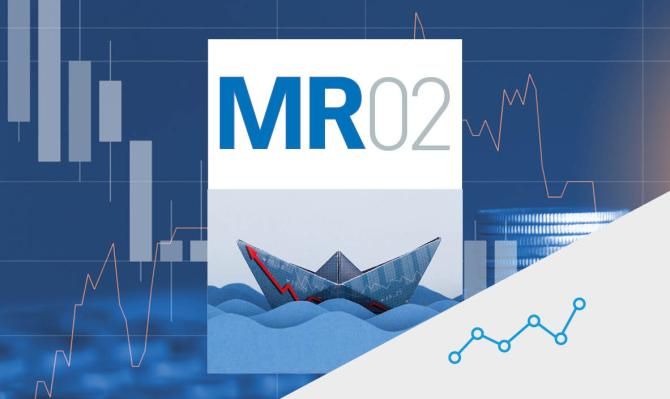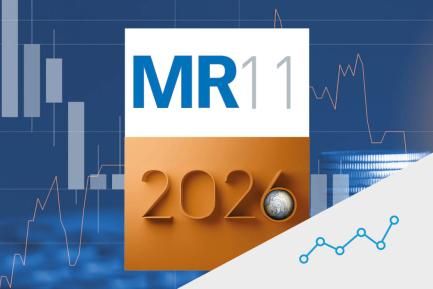
A good start to the year in the financial markets
Markets kicked off 2024 with risk appetite, supported by rhetoric of a soft landing in the major advanced economies and a positive assessment of the macroeconomic data.
Expectations of interest rate cuts drive market sentiment
Markets kicked off 2024 with risk appetite, supported by rhetoric of a soft landing in the major advanced economies and a positive assessment of the macroeconomic data. Thus, taking the view that the central banks have managed to bring down inflation without having a significant impact on economic activity and employment, for now, investors have turned their focus to the next step: interest rate cuts to return monetary policy to neutral territory. Markets maintained a dovish reading of the central banks, and thus expect the first rate cuts to occur in the spring, with a total of five reductions (of 25 bps each) anticipated during 2024 as a whole in both the euro area and the US. These expectations spurred a degree of optimism in equities, which was further reinforced by the publication of corporate earnings, which, in general, were better than expected by the analyst consensus.

The Fed and ECB see future rate reductions as likely, but remain cautious
There were no surprises after the January meetings, when the central banks of the major advanced economies once again kept interest rates unchanged (the ECB maintained the depo rate at 4.00% and the refi rate at 4.50%, while the Federal Reserve kept its benchmark rate in the 5.25%-5.50% range). The novelty was that, in their subsequent communications, the tone seemed to soften a little and the officials acknowledged that there has been good progress in the fight against inflation (despite stressing that the battle is not yet won and that there is still some way to go). In fact, the recent inflation data and the strength of the labour market are causing the ECB and the Fed to remain cautious and to not rush into cutting rates too early. Christine Lagarde stressed that it is still too early to discuss cuts and avoided talking about a timetable for the ECB. Jerome Powell, meanwhile, was explicit in pushing the Fed’s first rate cut beyond March, and market expectations shifted to May
(prior to the FOMC meeting, markets were assigning around a 50% probability to the first rate cut occurring as early as March). Other central banks followed a similar rhetoric, with the Bank of England, the Bank of Canada and Norway’s Norges Bank holding rates and signalling that they are cautiously moving towards cuts. The Bank of Japan, for its part, also kept rates unchanged and made no alterations to its monetary policy, although it left a window open to a possible easing of its yield curve control policy by signalling greater confidence about the possibility of reaching its inflation target.

Sovereign yields see-saw
The cautious easing of the central banks' tone led, as mentioned above, to markets anticipating the first rate cuts in the near future. However, the search for precision regarding the exact month in which these cuts will begin caused volatility in sovereign debt yields and in the financial markets' implied likelihood of rate declines.Whereas in the first half of January sovereign rates rose by as much as 30 bps in the case of the 10-year German bund and 20 bps in the case of the 10-year US bond, the trend reversed sharply following the ECB and Fed meetings, with particularly significant declines in the shorter ends of the curves. However, the release of strong employment data in the US brought a new change of course in the last week of January, with rebounds in sovereign bond yields and volatility in expectations regarding the central banks’ rate cuts.

The international stock markets enjoy another consecutive month of gains
Overall, stock markets registered yet another month of gains, thus extending last quarter’s rally, with investor sentiment supported by the publication of strong economic data and generally better-than-expected news at the start of the Q4 2023 corporate earnings season. The Japanese stock market performed particularly well, kicking off the year with a rally of almost 8%, benefiting from the prospect that the Bank of Japan will still take a few more months to abandon negative rates. In the euro area, the results were mixed from country to country, but the overall balance was positive and the major stock markets climbed around 1% (Spain’s IBEX 35 and Portugal’s PSI-20 were the exceptions, closing slightly down). In the US, the big tech companies once again led the charge and drove the S&P 500 to hit an all-time highs for five consecutive sessions, closing the month with new gains. The exception to the positive tone was China, where the Shanghai stock market posted losses in excess of 5% in the face of the persistent difficulties in the real estate market and the negative sentiment that was accentuated following a court order in Hong Kong to liquidate the real estate giant Evergrande.

The dollar turns a corner
The dollar was another asset that capitalised on the narrative and the changes in interest rate expectations. In the face of strong economic activity data in the US and the possibility it could delay the Fed’s first rate cuts, the currency appreciated against its main counterparts (except the yen) by up to 2%, following significant weakness at the end of last year. The exchange rate with the euro remained within the 1.08-1.09 dollar range, after reaching 1.10 dollars in December.

The economic resilience stabilises energy prices
Following three consecutive months of declines in oil prices, the Brent barrel price remained relatively stable in January at around 80 dollars/barrel, supported by encouraging economic activity data in the world’s major economies, which helped to sustain expectations of the demand for crude oil, and by the uncertainty around tensions in the Middle East. The price of European gas (TTF), meanwhile, continued to fluctuate just below 30 euros/MWh, slightly lower than the average level recorded in Q4 2023 but still significantly higher than pre-pandemic prices.



